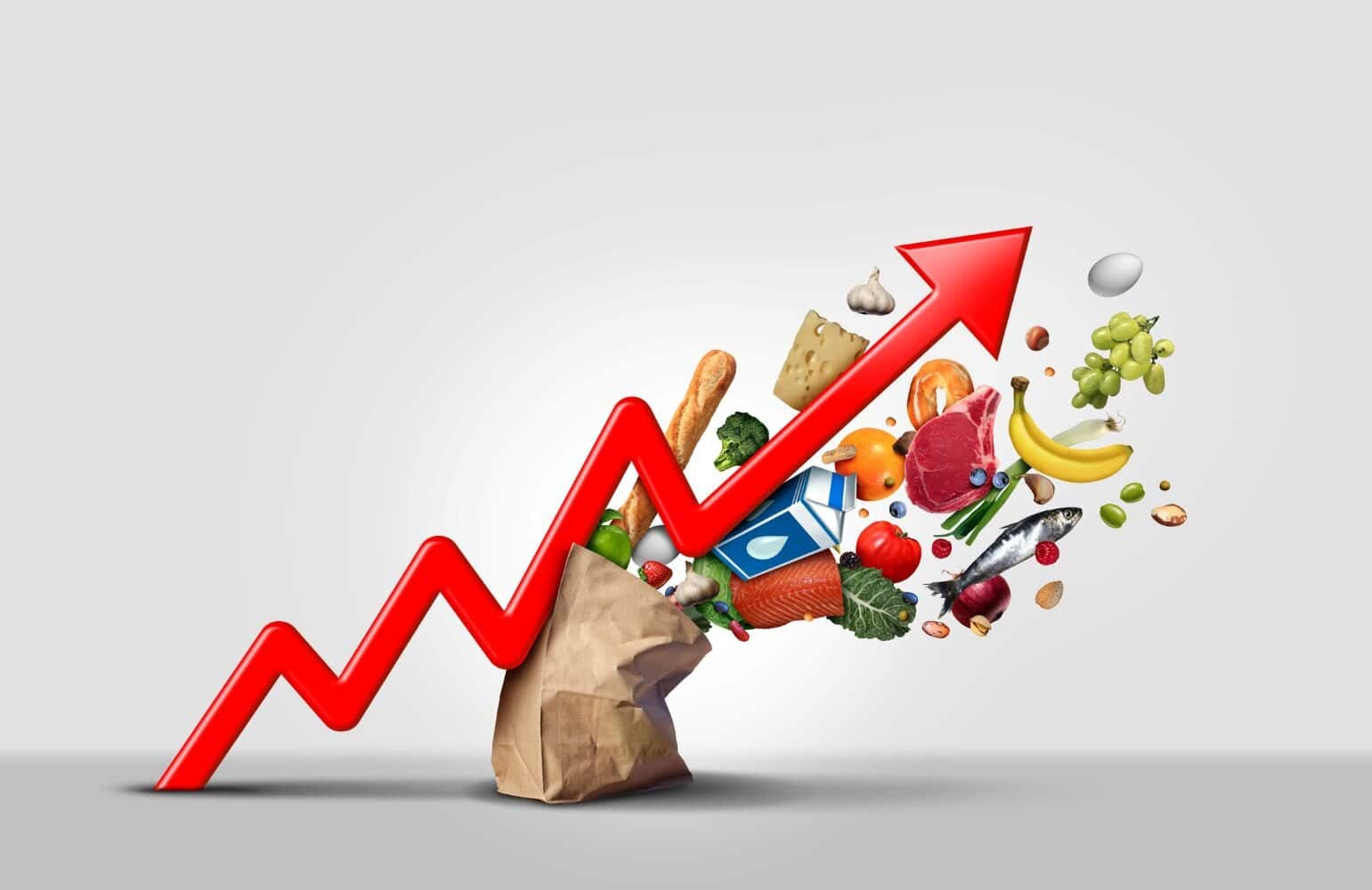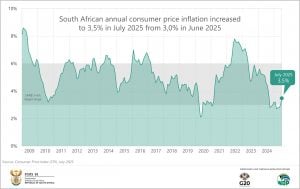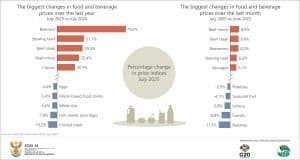Economists predicted that inflation would start to increase in the second half of the year, but an increase of 0.5% is a bit steep.

The inflation rate increased to a 10-month high of 3.5% in July from 3% in June, the highest rate since September 2024, when it was 3.8%.
Beef prices were again one of the main drivers behind food inflation, but there is at last good news for coffee drinkers who have been paying high prices for their favourite beverage.
Statistics SA announced the inflation rate for July this morning and pointed out that prices increased on average by 0.9% between June and July.
This graph shows how inflation increased over the years:

ALSO READ: Inflation increases in June as food prices increase to 15-month high
Household budgets under pressure again with inflation at 3.5%
According to Statistics SA, household food budgets are again under pressure as annual inflation for food and non-alcoholic beverages continued to increase, accelerating to 5.7% from 5.1% in June, with meat, vegetables and “other food” fuelling the uptick.
Meat, and specifically beef, remains the main driver. Statistics SA said the annual inflation rate for meat accelerated to 10.5% in July, extending a strong upward trend that began in February.
Beef prices increased on average by 28.8% over the past 12 months and by 7.6% between June and July. The average price for stewing beef was R94.80 in July 2024, climbing to R123.87 per kilogram in July 2025. The price of beef mince increased from R102.95 to R126.79 over the same period.
In addition, vegetable inflation quickened further to an annual 14.6% from 13.6% in June. Although high annual rates were recorded for carrots (+20.7%), lettuce (+17.5%) and tomatoes (+13.7%), prices for these products decreased between June and July. Carrots recorded the most significant monthly decline with a drop of 8.8%.
Statistics SA said most items in the miscellaneous group “other food products” were more expensive than a year ago, with salad dressing (+6,7%), vinegar (+6,6%), mixed spices (+6,2%) and soup powder (+5,9%) recording rates exceeding food and non-alcoholic beverages inflation.
ALSO READ: A 3% inflation target: What it means for SA markets, and will it solve our debt issues?
Inflation for other foods and drinks not so bad – coffee price going down
All other food and non-alcoholic beverages categories recorded softer annual rates. Inflation for hot beverages cooled for a third straight month to 8.9% in July, down from a peak of 17.5% recorded in August last year.
This includes some good news on the coffee front. Instant coffee prices decreased slightly between June and July, pulling the annual rate down to its lowest level since January 2024. Prices for cappuccino sachets also dropped for a second consecutive month.
The dairy and eggs category also remained in deflationary territory with several products cheaper than a year ago, including maize-based food drinks, eggs and certain milk varieties.
However, prices for cheese continue to increase, with Gouda costing 7.2% and cheddar 5.5% more than a year ago.
This graph below shows how the family braai has become more expensive, while prices for several breakfast items have eased:

ALSO READ: Inflation expectations almost at four-year low
Other notable price changes: fuel, electricity and water
Municipal tariffs are adjusted annually in July when municipalities introduce new budgets. Tariffs for water supply increased by 12.1% in 2025, significantly higher than 2024’s increase of 7.5%, recording the sharpest increase since 2018 when tariffs jumped by 12.9%.
Electricity increased by 10.6% in 2025, lower than the 11.5% recorded in 2024 and lower than the 11.3% increase provided by the National Energy Regulator of South Africa for bulk sales from Eskom to municipalities.
Refuse collection and sewage removal tariffs were added to the inflation basket this year. Refuse collection increased by 6.6% and sewage removal by 6.5%.
Fuel prices increased by 2.6% between June and July, after four months of decline. The monthly increase in July lifted the annual rate for fuel from -11.2% in June to -5.5% in July.






